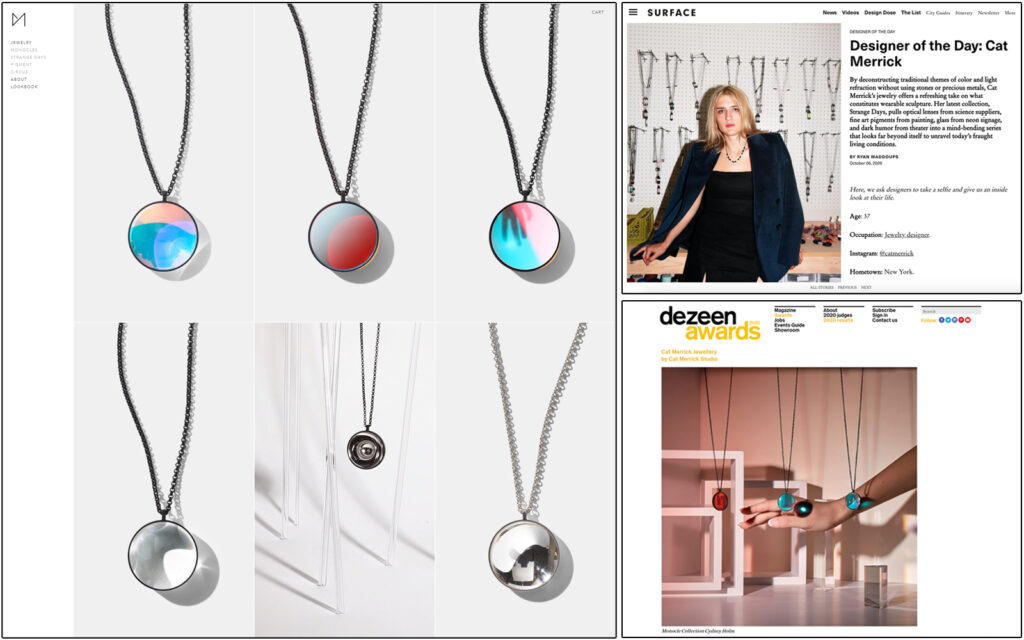
This post was written by Nora Wolf of Wolf Craft. Nora’s been a full-time publicist since 2007 and founded Wolf Craft in 2020 to work with creative businesses who haven’t been able to engage with full-time retainer PR firms because of budget or content constraints.
Learning how to do PR on your own can be overwhelming, especially if you’re a small business owner who’s new to this kind of activity. Media outreach has a lot of moving parts, and often it’s hard to know exactly where to start.
How do you figure out what outlets would even cover your products? Who’s the best person to reach out to? What types of images should you send?
l always say that the best place to start is research. If you sit down to a blank email and say “I want to write a media pitch about X product” you simply won’t know what to write. Why? Because you haven’t done any research. Wayyyy before writing a pitch, you need to know what outlets and editors cover what you’re selling and the types of assets you need to appeal to that publication.
So, let’s get into the five first steps to take if you want to pitch your product to the media.
1. Discover what’s working in your industry

We’ve all had that moment where we see press on a peer company and think “I can imagine my product in this article.”
If this has crossed your mind you know exactly where to start your PR research. Look at the companies who you admire and aspire to, the ones that have a greater reach than you… for now.
In fact, peer research is the very first homework assignment I always give my 1-1 consulting clients.
The Assignment: find 5 peer businesses, those that are slightly aspirational/2-5 years ahead of you in their career *and* have press coverage. Look at how their websites are structured, their photography, social media presence, and the types of press they’re getting and where.
You can make metrics based on this research and start to create a roadmap for website updates, photography, press outreach, etc.
I suggest making a specific spreadsheet for peer press. This will become your Media List and you’ll continue to build on it as you do more research and reach out to publications. If you’re just starting out you may want to limit your research to digital press, which can be easier to sift through than going through back issues of print magazines on a platform like Apple News+.
Pro tip: when selecting peers for research, you don’t have to choose someone who makes products you love, you can dislike their work but still learn a lot. Look for peers who have similar products at similar price points, sell to a similar type of customer, and have a press page on their website. Finding businesses who list press placements on their website or their instagram will make this initial research much faster.
What to include in your Media List – step 1:
- article link and title
- media outlet – where was the article published?
- editor – who wrote the article?
Your list may include a few articles from the same outlet or even the same editor, that’s okay! Each new entry does not need to be a new publication or new editor. Finding overlaps, especially press covering different brands may help you narrow down places that are an especially good fit for your work.
After looking through the press placements for 5 peer businesses you should have a good start on your media list and are ready for step 2.
One important note, doing DIY PR can take a lot of time so set limits for yourself. Once you’ve found 10-15 articles that include peer products, start step two. There’s no use listing fifty articles if that leaves you with no time to actually pitch! Creating boundaries in PR work is a very important part of the work.
2. Research relevant media outlets
The press spreadsheet you started while researching peers is the foundation for your Media List, your most important PR tool. You will add to it as you build media outreach into your ongoing business growth work.
Your initial list should include several links to articles, the editor who wrote them, and the outlet where they were published. You’ll use these articles to better understand what these target publications and editors write about and what you need to pitch them.
For each digital article you should be able to click on the editor’s name and see a list of everything they’ve written for this publication. This is helpful because you’ll see the types of articles and themes this editor writes about and the frequency.
Go through your Media List and make notes on the regular features these editors write so you have a solid idea of what makes sense to pitch which editors. It is helpful to include notes on the specific products or story ideas you want to send a particular editor, section, or recurring feature.
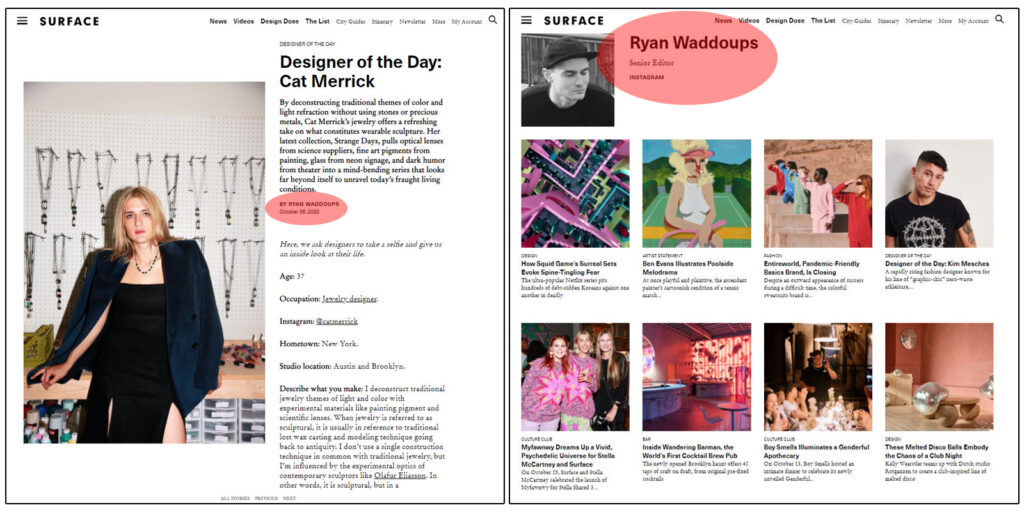
What to add to your Media List – step 2:
- story angle – what was the article about? A product round-up based on color or an in-depth story about how something was made?
- editor info – types of articles they write? Frequency? Regular recurring features?
- pitching notes – based on what you’ve found, what products do you want to pitch to this editor/outlet?
- editor email
Tips to find emails of editors/writers/freelancers
- Look at the Masthead
- Find the email formula from what you can see on the publication’s website (firstname.lastname@publisher.com, firstinitallastname@publication.com)
- Twitter (email is often in the Bio, or you can DM for the best email to send pitch ideas to)
- Muckrack – even free, this tool has changed the game for researching what an editor has written.
Pro tip: this research is often cyclical. As you look at articles you may find more peers you didn’t even know about that you want to look into in the future for more opportunities and ideas. Be sure to log these somewhere too!
3. Make sure you have press-quality photography
Once you get to know me, you’ll quickly learn that I’m a broken record when it comes to photography.
Great photography is truly the most important part of a successful media outreach plan.
Magazines and blogs are essentially big-picture books. There isn’t a design editor in the world who will care about what you’re working on if you don’t have big, beautiful photos to go along with it.
Design media is visual first, and everything else second.
In order to successfully secure media placements you need to have assets that meet the standards of the publications you want to pitch. So, how do you figure out what these standards are? With your Media List, look at the articles you’ve already been taking notes about and add information about the types of photos and styling.
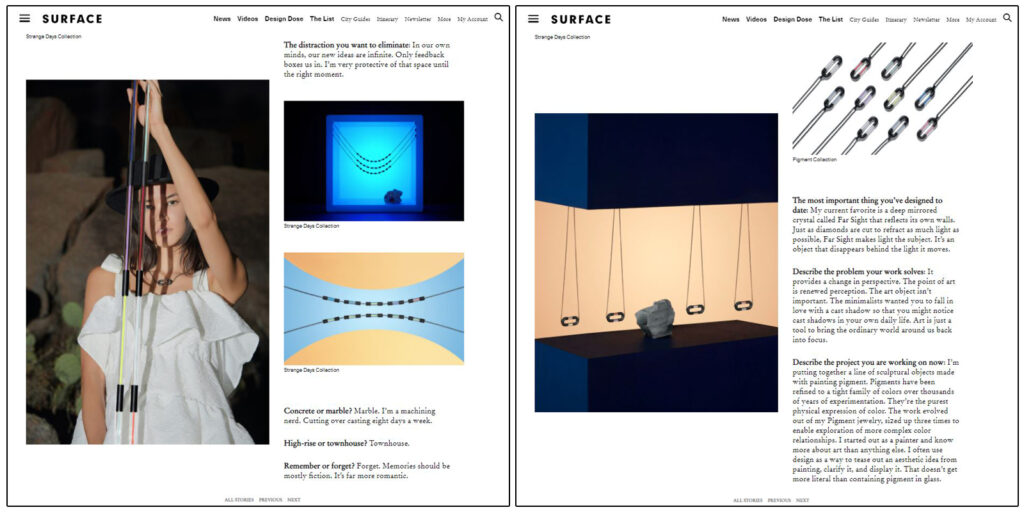
What to add to your Media List – step 3:
- types of photos and styling – what did the photos look like? All simple product photos against a white background or something else?
- asset gaps – do you have the right photos to pitch this outlet or do you need to take new ones?
Pro Tip: If you make products and you have a limited budget, you need to prioritize one type of image — it should be “silhouette” shots, also known as “solo-against-white, white sweeps, and e-comm photos.” In these images, your work appears well-lit with minimal shadows against a completely white background, with no wrinkles, shadows, or extra information.
If you’re feeling ambitious and want all the instructions about *exactly* how to create media-quality images, we put together three guides all about photography for media outreach.
4. Tweak your website so it’s editor-ready
Put yourself in the shoes of an editor who gets 100+ emails a day. They’ve never heard of you and an email about you popped into their inbox.
The first thing they are going to do is go to your website and your Instagram.
You have about 10 seconds before they decide to stay on your site or move on to something else. What you do and who you are needs to be crystal clear right up front and the images on your homepage need to be great, this lets them know that you’ll also have media-quality assets they can share with their readers.
Your peer research will continue to come in handy here! If your peers are getting press placements for their products they’re likely doing something right on their website also. An editor won’t send their readers to websites that are unprofessional, broken, or confusing no matter how good the pitch and images you send over are.
An editor-ready product website includes 5 key elements:
- High-quality, compelling imagery (aka a great banner photo and product images across the site)
- Consistent graphic language and POV (logo, color, layout, navigation, graphic elements)
- Short, clear copy that states the who, what, how of your biz (I call this your “elevator pitch” and it typically lives just under the banner on your homepage)
- Clear easy way to purchase the product(s) you are pitching
- An about page that describes your business, process, who you are, and any important details like local sourcing or sustainability. This is especially important if you want to pitch more in-depth stories.

During this step, you won’t add any additional info to your Media List but you will make sure your website is up to snuff so when you reach out you’re putting your best digital foot forward and giving yourself the best chance at getting a placement.
5. Develop a Pitch
Now that you understand the outlets and editors that cover products like yours you’re ready to craft your pitch.
Pitches are short emails. To be effective they need to be clear and have structure. Your pitches should be a few sentences to a few paragraphs, tops, and still explain the “who, what, where, when, why, and how” of your product /story.
Essential pitch elements:
- Show you know the editor. Reference an article that the editor has written that’s most directly related to what you’re pitching. This shows you know their beat and you’ll be easier to work with.
- Don’t bury the lede. Start your pitch with the reason you’re reaching out. This is your news peg or why your story is newsworthy. If you don’t include this information after the first paragraph, it may not get read at all.
- Share the context, briefly. Now you can get into some more detail. If your story is that you’re launching a new product, talk about the product first, then you can list out a few of the elements that make it sustainable. Lead with the new, then give context.
- Include a call to action. What do you want the editor to do as a result of your pitch? If you want to be interviewed, say you would be happy to do a Q&A. If you have more high res images, let them know they’re available and include a link. Be sure your intention is clear.
What to add to your Media List – step 5:
- tracking – create a column in your Media List where you can record when you send pitches, follow-ups, and the responses you get from editors.
If you don’t get a response be sure to follow up, and don’t worry that it will come off as annoying. Following up is a big part of the pitching process. I suggest always following up in the same email as your first pitch, rather than sending a new email. This will show the editor that you’ve already reached out and when.
Be friendly and courteous, short and sweet. We suggest waiting a few days between emails and we never follow up more than twice.
If you read this post and are jazzed about doing some PR outreach on your own and want a few more step-by-step tips to get that first pitch out of the inbox check out my 5-Day Pitch the Media Mini-Course.
A Newsletter That Goes Beyond Shopify 101
It’s easy to find beginner info about ecommerce online. If you’re past that? Subscribe to our newsletter for advanced strategies and need-to-know info for established shops. You'll get:
- Weekly tips to help you market and sell your products
- Updates when there is news that may impact your site
- Round ups of interesting links and info for brands
- Invites to our live trainings and webinars
- Instant access to our past emails
Browse Posts
A Newsletter That Goes Beyond Shopify 101
It’s easy to find beginner info about ecommerce online. If you’re past that? Subscribe to our newsletter for advanced strategies and need-to-know info for established shops.
Learn how the top shops grow:
"*" indicates required fields
1 thought on “How to Get Media Placements: Your First 5 Steps”
Leave a Comment
Related Posts
Let's take your online shop to the next level
The Shopify websites we design have a reputation for substantial improvements to ecommerce conversion rates and online sales. Let's talk!
 Grab my guide to the 10 main ways to grow traffic and optimize to boost sales.
Grab my guide to the 10 main ways to grow traffic and optimize to boost sales.
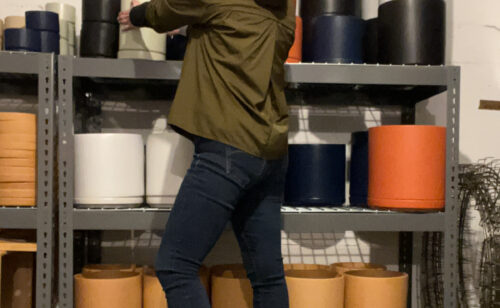

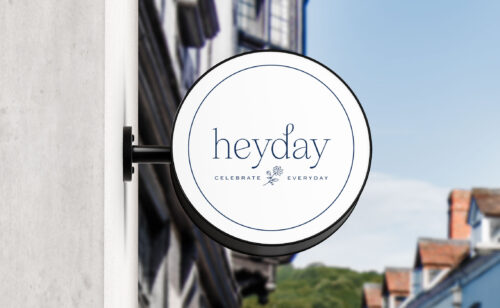
Such helpful tips, thank you for sharing!